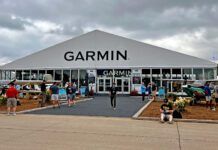In the May 2022 issue of Aviation Consumer we reported on the recent effort by the general aviation alphabet groups and the FAA to revive the collapsed Piston Aviation Fuel Initiative (PAFI) under the snappy new name EAGLE (Eliminate Aviation Gasoline Lead Emissions). Along with it was a request to Congress to increase its funding from roughly $4 million per year to $13 million per year. The promise, again, is that they’ll “get it right” and eliminate the use of 100LL avgas by December 2030. Meanwhile, while all this money is changing hands, more and more airports will likely ban the sale of 100LL, leaving more and more pilots with fewer places to buy fuel—potentially causing more fuel exhaustion crashes as pilots try to get to an airport that sells the type of fuel their engine must have.
Those of us at Aviation Consumer have been following the search for unleaded avgas for 12 years and are frankly furious that another committee has been formed to solve a problem for which a solution has already been demonstrated—and is ready to go into the tanks of our airplanes today. We’re also against that aviation organizations that we respect, such as AOPA and EAA, are supporting this boondoggle to the detriment of their members. In my view (and plenty of pilots I’ve talked with) the EAGLE project is actively delaying the benefits of unleaded avgas to their members, forcing them to continue paying for unneeded early spark plug replacement and more frequent oil changes caused by leaded avgas.
Here’s some background: Last month, we mentioned a litigation horror story “scenario” widely circulated as the reason why the various GA manufacturers and their lobbying organization—GAMA (General Aviation Manufacturers Association)—continue to push a taxpayer-funded “industry consensus standard” for a new unleaded avgas. Hand in hand with that effort is a rather constant public drumbeat claiming that any unleaded avgas “solution” that is approved through the traditional STC process cannot be a “fleet-wide” solution. But both are simply untrue.
Our staff report last month was a bit tongue in cheek when we referred to “Joe and Sam [inventing] the world’s greatest unleaded avgas.” Most readers knew we were referring to the two owners of the little company in Oklahoma—GAMI—that has developed a high-octane, drop-in unleaded 100LL replacement. Those two guys are righteously frustrated that the FAA has delayed the G100UL high-octane avgas certification project for over 12 years (yes—12 years.)
At Sun ‘n Fun 2022 in Florida, GAMI publicly displayed emails from the FAA, dated March 2 and 3 of 2022, demonstrating that GAMI had successfully completed all of the FAA’s certification requirements for fleet-wide STC approval and that the only reason the FAA Wichita Aircraft Certification Office could not sign and deliver the fleet-wide engine and aircraft STCs to GAMI was because Washington headquarters refused to allow the manager of the FAA Wichita Certification Office to sign and deliver the two fleet-wide STCs to GAMI. What is really going on here?
To begin with, the underlying problem is not a fear of liability as we described in last month’s description of Joe and Sam producing and selling millions of gallons of G100UL unleaded avgas. That scenario also included the concept that one of the OEM aircraft or engine manufactures would also be sued in some future post-crash lawsuit, along with GAMI. We repeated the horror story being circulated by the manufacturers: If the jury found the large manufacturer to only be one percent liable, that company would still have to pay the whole judgment, because GAMI would have no assets.
As an attorney recently retired from 42 years of aviation practice, much of it defending aircraft and component manufacturers, I have to point out that the one-percent result relies on two false assumptions. I spoke with GAMI’s George Braly about the liability issue and learned that, first, GAMI has no intention of producing and distributing G100UL avgas, and second, even if GAMI did produce and sell G100UL, the scenario assumes that GAMI would not have routine product liability insurance—which would be foolish. We learned that the reality is GAMI will license the production of G100UL avgas to one of the large existing refiners or blenders of petroleum products.
Part of the fear that the alphabet groups are slinging to stop a successful high-octane unleaded avgas is to smear the entire FAA STC program, by saying that it isn’t capable of safely approving STCs for widespread applications. That’s nonsense—the STC program has brought us huge improvements for our airplanes that are approved throughout the fleet. Two that quickly come to mind are VGs and electronic ignition. Plus, the FAA specifically “blesses” the use of its traditional STC certification process to approve a privately developed gasoline or oil specification for use in aircraft and engines. The FAA has done that several times in the past. See FAA Advisory Circular 20-24D.
When I asked GAMI’s George Braly what GAMI’s plans were for production of G100UL avgas, he was quick to state that for the last year GAMI has been in detailed negotiations with appropriate, capable and large companies who have years of experience producing refined petroleum products.
GAMI’s plan is to license those companies to produce and distribute G100UL. GAMI disclosed at AirVenture Oshkosh 2021 that it was actively working with industry giant Avfuel to manage that aspect of the production and blending of G100UL avgas. GAMI told me that it is contractually obligated (by its distribution agreements) with Avfuel, and that GAMI will allow qualified refiner/blenders to produce G100UL so that there will not be a monopoly on production, distribution and sale of G100UL avgas.
The other consistent complaint from the alphabet groups and the OEMs is that an STC is not a “fleet-wide” approval to use a new aviation gasoline. The FAA, in public statements at the recent EAGLE press event in Washington, D.C., made a similar statement. That is simply untrue.
At a press conference at Sun ‘n Fun 2022, GAMI showed copies of the FAA G100UL avgas engine AML-STC. That lengthy document includes a line item for every single spark ignition piston engine found in the FAA’s database of engines (TCDS). GAMI also shared an advanced look at an even longer—more than 60 pages—list of all of the aircraft that use any of those specific spark ignition piston engines. If that’s not “fleet- wide,” I don’t know what is.
Only the failure of FAA headquarters to allow the Wichita Certification Office to sign and deliver the approved model list STCs is holding up that process of developing the infrastructure to produce and widely distribute G100UL avgas.
Is the FAA running “scared” after the congressional blowback from the 737 Max and the 5G fiascos? The FAA has stated that the G100UL avgas STC is the single most significant STC that the FAA has ever been asked to approve.
But, also, consider—could it be as simple as the old maxim: Follow the money? In my interview of Braly, he related two stories. One involved a recent effort by a well-known producer of 100LL to try to sabotage the G100UL STC. The second story came from a meeting he had, some ten years ago, with another major oil company. At that time, the executive in charge of all refining operations for that oil company told Braly that his company had “made a lot of money” selling the last few billion gallons of leaded car gas, because they could charge a large premium for that leaded car gas in the last few years before it was banned by the EPA. Further, that same major oil company anticipated making a lot of money when they sold the last few hundred million gallons of leaded avgas. Why? Because the bottom-line profit margin on car gas is only a couple of pennies/gallon, but the bottom-line margin of profit for 100LL is estimated to be in the range of 50 to 80 cents per gallon.
It appears that there are powerful financial forces that want to drag out the end date for the sale of 100LL as many years as possible. How do you do that? By creating yet another committee, which is, as author Robert Heinlein said, “a life-form with six or more legs and no brain.” Committees have a way of making sure a problem does not get solved until the date for the committee to dissolve.
We like what was said at AirVenture 2010 by then president of Lycoming, Mikael Kraft, who stood up at a seminar on unleaded avgas: “We have been studying this leaded avgas problem for twenty years. We have to stop loving this problem and just fix it!” In my opinion the problem has been fixed and GAMI and Avfuel should be turned loose to get unleaded fuel in our fuel tanks now. —Rick Durden




